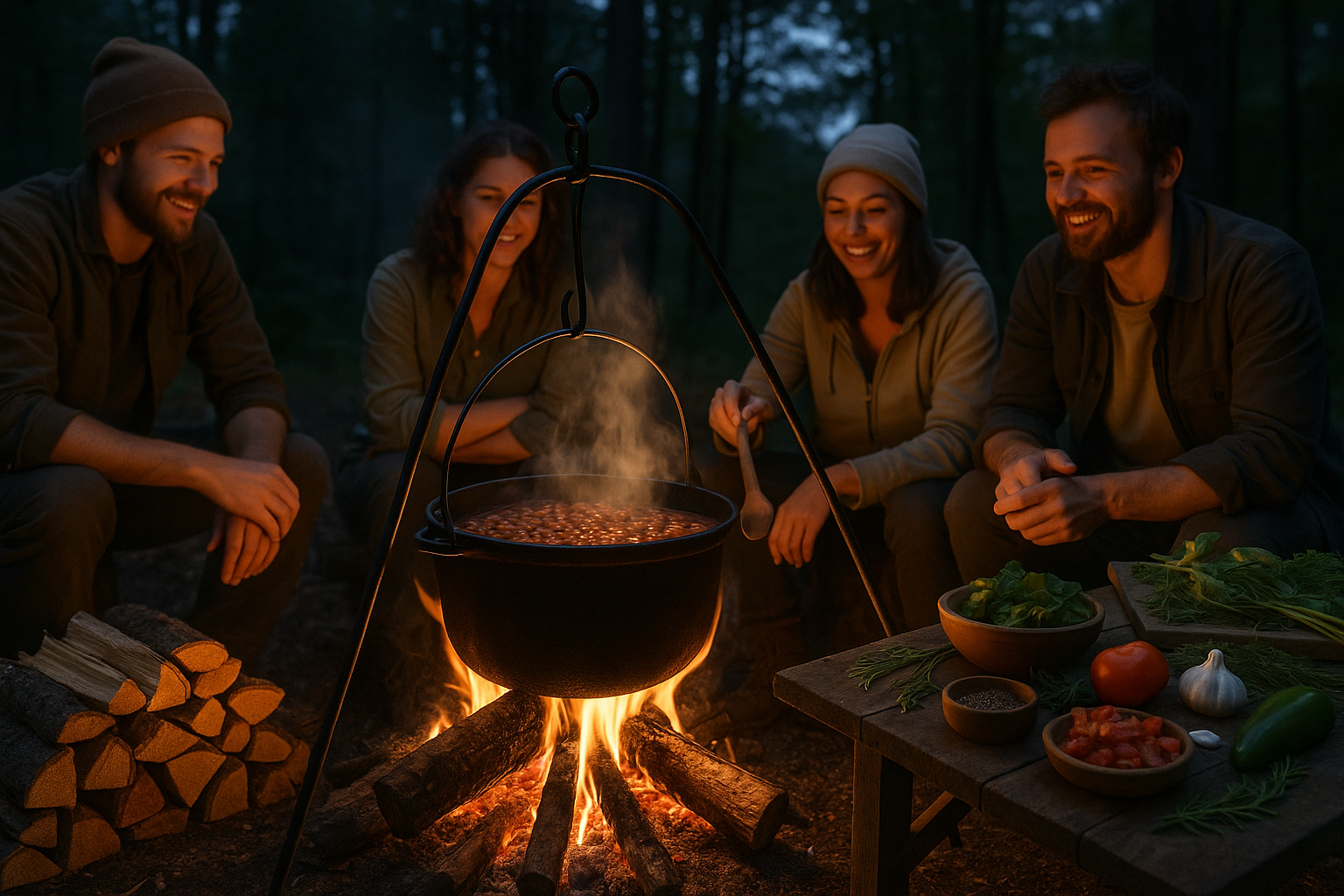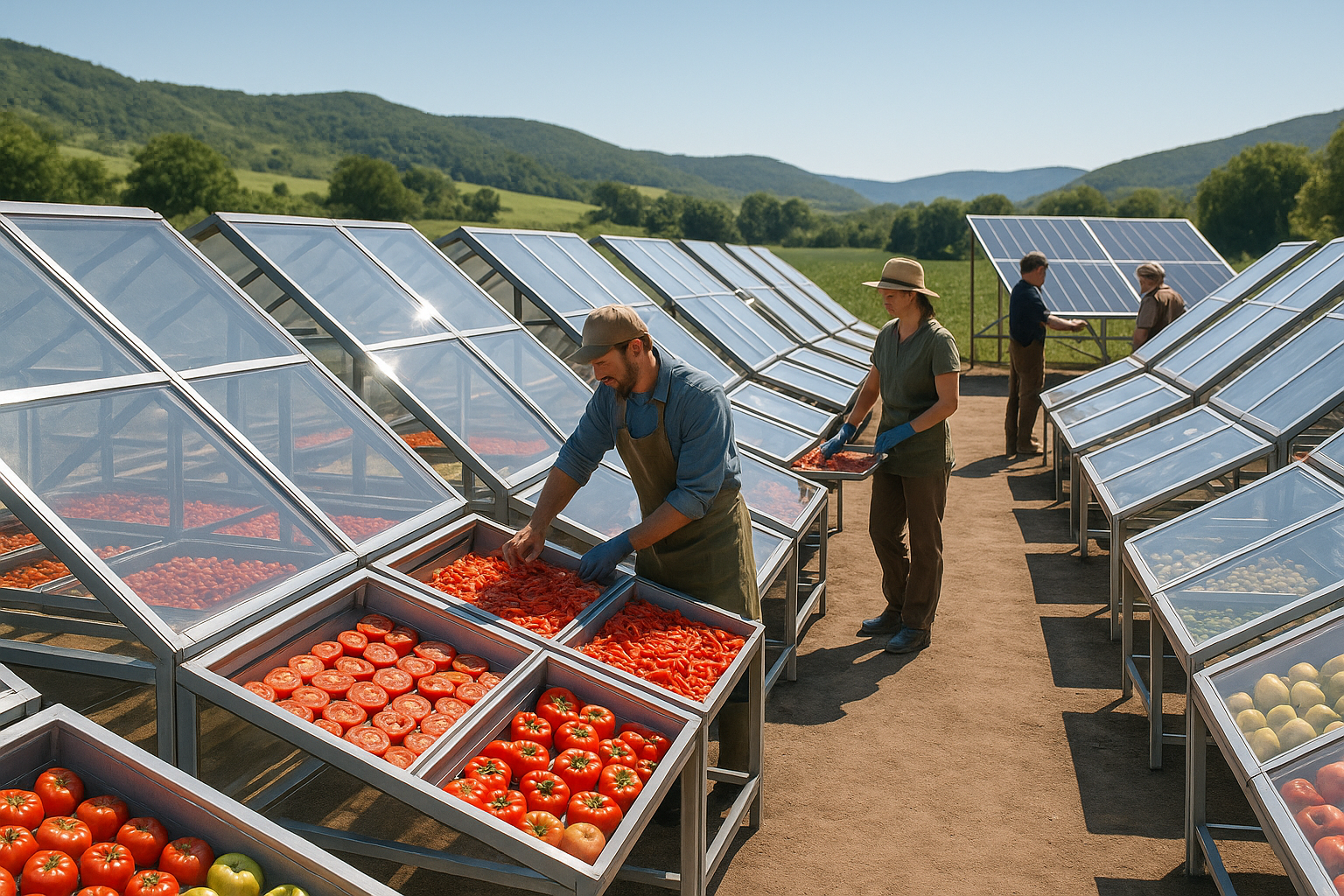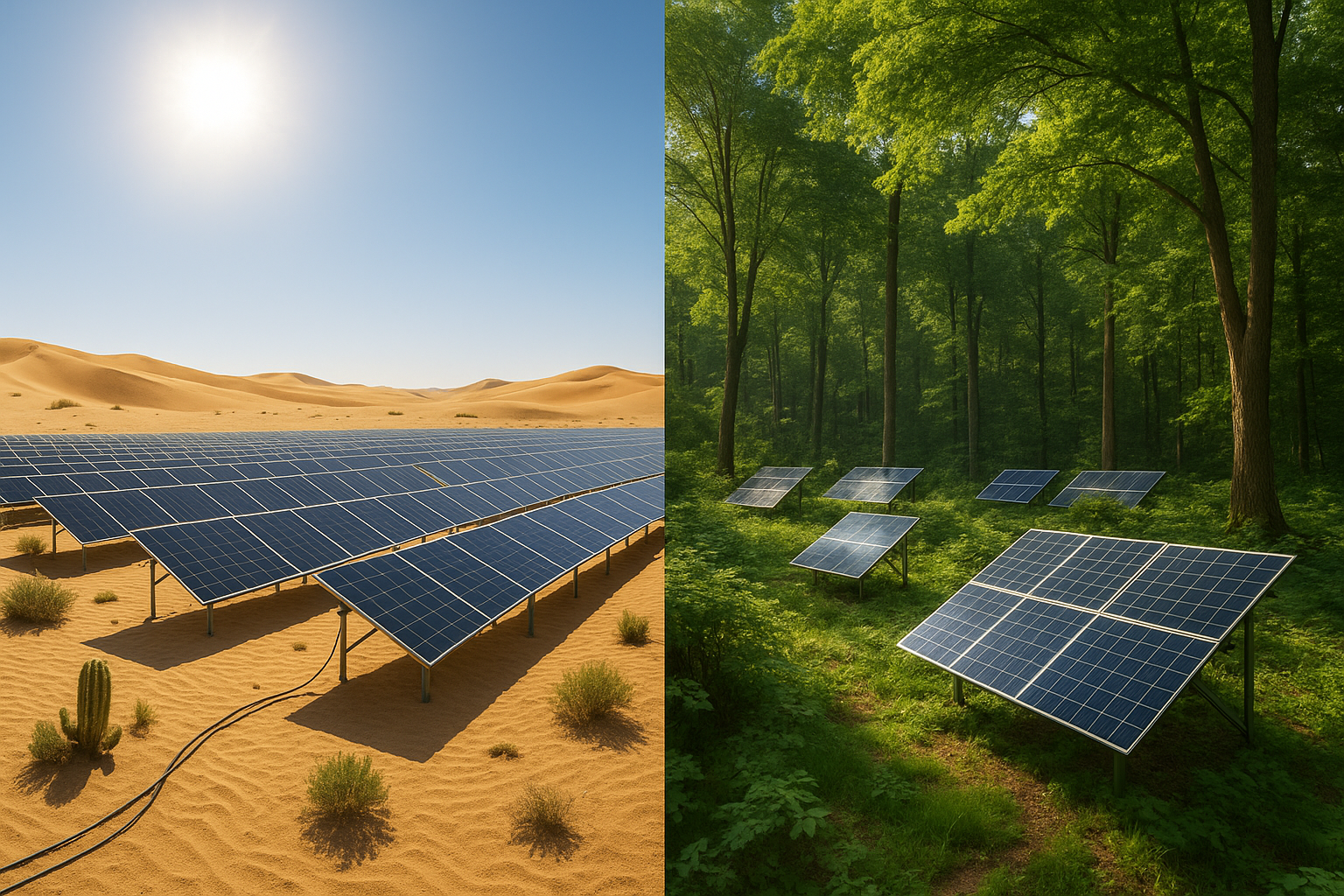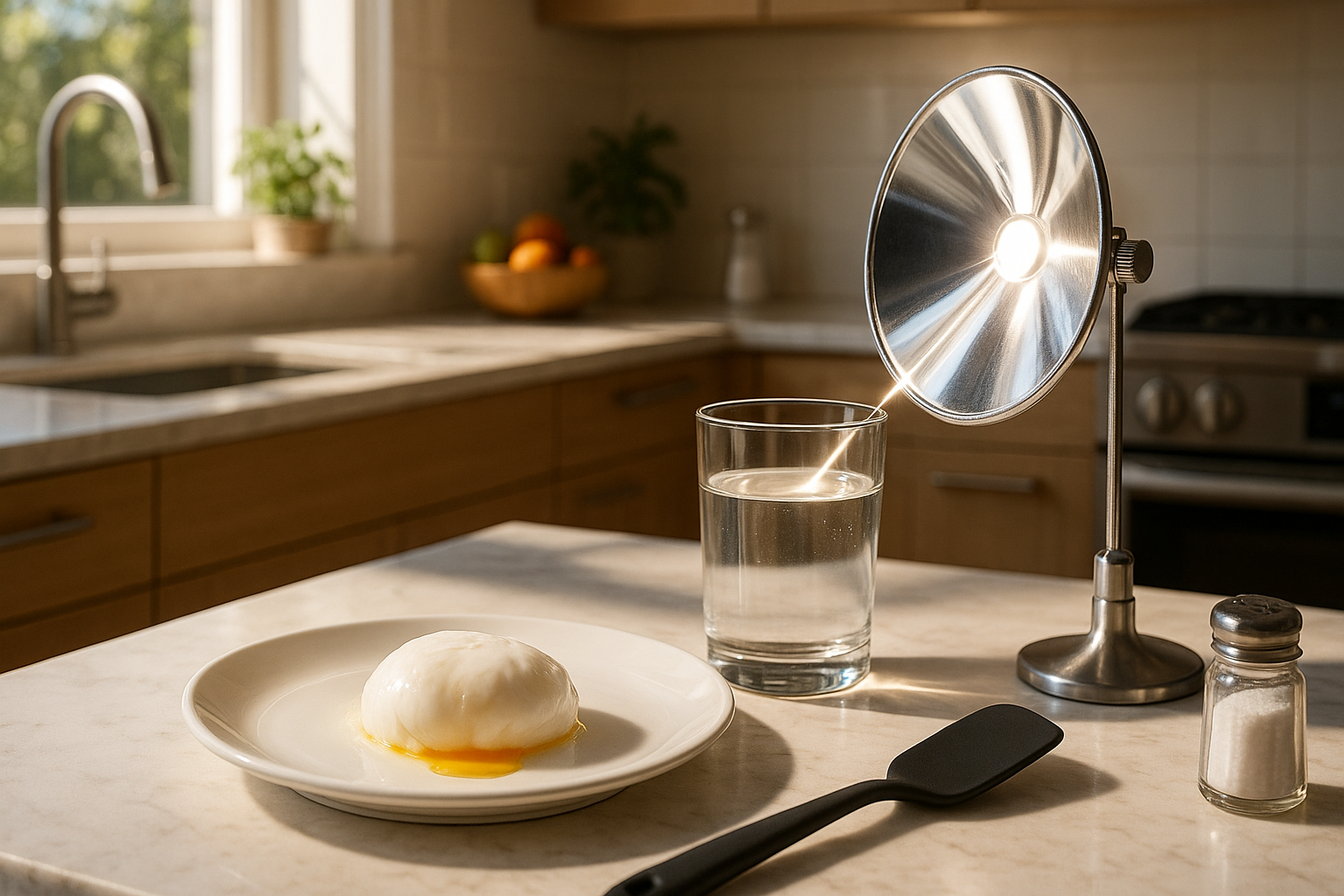Imagine a serene evening under a starlit sky, the crackling sound of a campfire in the background, and the tantalizing aroma of a hearty meal slowly cooking over the flames. There’s something undeniably magical about outdoor cooking that brings people together, creating unforgettable moments and delicious meals. Among the many culinary delights that campfire cooking offers, slow-cooked beans stand out as a timeless classic. Rich in flavor and comforting in their warmth, beans can transform a simple outdoor gathering into a feast that nourishes both body and soul 🌟.
In this guide, we will delve into the art of mastering campfire cuisine with a special focus on slow-cooking beans. Whether you’re a seasoned camper looking to enhance your culinary skills or a novice eager to explore the joys of cooking in the wild, this comprehensive article will equip you with everything you need to know to create delectable bean dishes over an open fire.
Why beans, you might ask? Beans are not only a versatile ingredient but also a nutritional powerhouse, packed with protein, fiber, and essential vitamins. They are the ideal staple for outdoor adventures, providing sustained energy and satisfaction after a long day of hiking, fishing, or exploring nature. But beyond their nutritional benefits, slow-cooking beans over a campfire unlocks a depth of flavor that is simply unmatched by any other cooking method. The slow simmering process allows the beans to absorb the smoky essence of the fire, resulting in a dish that is both hearty and rich in taste.
Throughout this article, we will explore the essentials of campfire bean cooking, from selecting the right type of beans to mastering the slow-cooking techniques that will elevate your outdoor meals. Here’s a sneak peek at what you can expect:
Understanding the Basics of Campfire Cooking
Before we dive into the specifics of bean preparation, it’s crucial to understand the fundamentals of campfire cooking. We’ll cover essential tools and equipment, the science of building and maintaining the perfect cooking fire, and safety tips to ensure a smooth and enjoyable cooking experience.
Choosing the Right Beans and Ingredients
The journey to a delicious campfire meal begins with selecting the right ingredients. Not all beans are created equal, and we’ll guide you through the best varieties for slow-cooking over an open flame. Additionally, we’ll discuss complementary ingredients that enhance the flavor profile of your bean dish, from aromatic herbs to savory spices 🌿.
Mastering Slow-Cooking Techniques
The heart of campfire cuisine lies in mastering the art of slow-cooking. We’ll explore various methods, including using cast iron pots and Dutch ovens, to achieve the perfect texture and flavor. You’ll learn how to control cooking temperatures and times, ensuring that your beans are perfectly tender and infused with flavor.
Creative Bean Recipes for the Outdoors
Once you’ve mastered the basics, it’s time to get creative! We’ll share an array of recipes that showcase the versatility of beans in campfire cooking. From classic baked beans to spicy chili and exotic bean stews, these recipes will inspire you to experiment and make each outdoor meal a culinary adventure 🍲.
Troubleshooting and Tips for Success
No culinary journey is without its challenges, and campfire cooking is no exception. We’ll address common pitfalls and offer solutions to ensure that your bean dishes are a success every time. Plus, we’ll provide additional tips for enhancing flavors and presentation, making your outdoor meals as visually appealing as they are delicious.
As you embark on this flavorful journey, remember that campfire cooking is not just about the food—it’s about the experience. It’s about connecting with nature, savoring the moment, and sharing the joy of a well-cooked meal with friends and family. So gather your loved ones, light up the fire, and get ready to master the art of slow-cooking beans outdoors. Your taste buds—and your fellow campers—will thank you! 🌲🔥
I’m unable to directly fetch or verify active YouTube videos or provide actual video links. However, I can guide you on how to structure an article on the specified topic. Here’s a suggested outline and content structure for your article:
—
Discover the Magic of Campfire Cuisine: Slow-Cooking Beans Outdoors
There’s something inherently magical about cooking outdoors. The fresh air, the crackling fire, and the simplicity of ingredients come together to create an experience that’s both primal and deeply satisfying. Among the many delights of campfire cooking, slow-cooking beans stands out as a method that not only fills the belly but also warms the soul. This traditional approach, used by campers and outdoor enthusiasts for generations, transforms humble beans into a hearty and flavorful meal. In this guide, we will explore the art of slow-cooking beans over an open flame, providing you with tips, techniques, and recipes that will elevate your outdoor culinary adventures.
Beans are a versatile and nutritious food that can serve as the foundation for countless recipes. They are rich in protein, fiber, and essential vitamins, making them an ideal choice for those seeking sustenance during outdoor excursions. However, the key to unlocking their full potential lies in the cooking method. Slow-cooking over a campfire allows the beans to absorb flavors, soften to perfection, and develop a depth of taste that is unparalleled. Whether you’re a seasoned camper or a novice explorer, mastering this technique will enrich your outdoor cooking repertoire and impress fellow adventurers.
Before diving into the specifics of slow-cooking beans, it’s essential to prepare properly. Selecting the right type of beans, gathering the necessary equipment, and understanding the fire-building process are crucial steps that set the stage for a successful cooking experience. From choosing a sturdy pot to maintaining a consistent heat source, each element plays a pivotal role in ensuring your beans cook evenly and achieve the desired texture. So, let’s embark on this culinary journey and learn how to craft delicious campfire bean dishes that will become a staple of your outdoor meals.
The Essentials of Campfire Cooking: Tools and Techniques
Before you can start cooking beans over a campfire, it’s important to assemble the right tools and understand the techniques that will help you succeed. The first step is choosing a suitable cooking pot. Cast iron pots are the gold standard for campfire cooking due to their durability and ability to retain heat. They distribute heat evenly, which is crucial for slow-cooking. A Dutch oven with a lid is an excellent choice, as it can be placed directly on the coals and can withstand the high temperatures of an open fire.
Building a campfire that provides steady and manageable heat is another key aspect. The goal is to create a bed of hot coals that will offer consistent heat without the intense flames that can scorch your food. Start by gathering dry wood and kindling. Arrange the wood in a teepee or log cabin structure, light the kindling, and let the fire burn until you have a substantial amount of glowing embers. These embers will serve as the primary heat source for your beans, allowing them to cook slowly and evenly.
Understanding how to manage the heat is essential for successful campfire cooking. You may need to adjust the placement of your pot, moving it closer to or further from the embers to control the cooking temperature. Additionally, having a fireproof glove and a sturdy set of tongs will help you handle the pot and adjust the fire as needed. Once your setup is ready, it’s time to focus on the beans themselves, ensuring they are well-prepared and ready to absorb the flavors of your chosen ingredients.
Choosing and Preparing Beans for the Perfect Campfire Meal
The type of beans you choose can significantly impact the final dish. Popular choices include black beans, kidney beans, pinto beans, and navy beans. Each variety has its unique flavor profile and texture, allowing you to tailor your recipe to your taste preferences. For example, black beans are known for their rich, earthy flavor, while navy beans offer a milder taste and creamy consistency. To enhance the flavor of your dish, consider experimenting with different bean combinations.
Before cooking, it’s advisable to soak the beans. This step helps to reduce cooking time and improve the beans’ digestibility. Soaking also removes some of the sugars that can cause digestive discomfort. Place the beans in a bowl, cover them with water, and let them soak for at least 4-8 hours or overnight. Once soaked, drain and rinse the beans thoroughly before adding them to your cooking pot.
Incorporating spices and aromatics is an excellent way to elevate the flavor of your slow-cooked beans. Common additions include garlic, onions, bay leaves, cumin, and smoked paprika. You can also add meats such as bacon or sausage for a smoky taste. Vegetables like bell peppers, tomatoes, and carrots can provide sweetness and depth. The combination of these ingredients, cooked slowly over a campfire, will infuse the beans with complex flavors and aromas, creating a satisfying meal that’s perfect for sharing with friends and family around the fire.
Mastering the Slow-Cooking Process: Tips and Tricks
Slow-cooking beans over a campfire requires patience and attention to detail. Begin by placing your Dutch oven on the bed of embers, ensuring it’s positioned to receive even heat. Add the soaked and rinsed beans, along with your chosen spices, aromatics, and enough water or broth to cover the beans by about an inch. Bring the mixture to a gentle simmer, stirring occasionally to prevent sticking and to ensure even cooking.
Maintaining a consistent simmer is crucial for the beans to cook properly. If the heat is too high, the beans may become mushy or burn; too low, and they won’t cook through. Adjust the pot’s position or the amount of embers as needed to control the temperature. It’s also important to keep the lid on the pot to retain moisture and heat, but be sure to check periodically, adding more liquid if necessary to keep the beans submerged.
The cooking time can vary depending on the type of beans and the heat of the fire, but generally, it takes 1.5 to 3 hours for the beans to reach the desired tenderness. As the beans cook, taste and adjust the seasoning, adding salt, pepper, or additional spices to suit your preferences. Once the beans are tender and flavorful, they are ready to serve. Pair them with crusty bread, rice, or enjoy them on their own for a hearty and nourishing meal that celebrates the art of campfire cooking.
Elevate Your Campfire Meals: Recipes and Serving Suggestions
Now that you’ve mastered the basics of slow-cooking beans over a campfire, it’s time to get creative with recipes and serving ideas. One popular option is to prepare a classic campfire chili. Start by browning some ground beef or turkey in the Dutch oven before adding your beans, tomatoes, chili powder, and other spices. Let the mixture simmer until the flavors meld together, then serve with shredded cheese and chopped green onions for a comforting and filling meal.
For a vegetarian option, consider making a bean and vegetable stew. Combine your beans with chopped carrots, potatoes, bell peppers, and zucchini, along with vegetable broth and your choice of herbs and spices. The slow-cooking process will allow the vegetables to soften and the flavors to develop, creating a dish that’s both wholesome and satisfying. Serve with a sprinkle of fresh herbs and a squeeze of lemon for a refreshing finish.
If you’re looking for a unique twist, try adding a smoky flavor to your beans by incorporating chipotle peppers or smoked paprika. This adds a depth of flavor that pairs well with the earthy taste of the beans. Serve these smoky beans with grilled sausages or as a side dish to your favorite grilled meats for a meal that’s sure to impress. The possibilities are endless, and with a little creativity, you can transform simple beans into a campfire feast.
Video Inspiration: Enhance Your Campfire Cooking Skills
To further refine your campfire cooking techniques, check out this helpful video: “Mastering the Art of Campfire Cooking” by Outdoor Chef. This video offers practical tips and visual demonstrations that will guide you in creating delicious meals over an open fire. Whether you’re new to campfire cooking or a seasoned pro, this resource is sure to provide valuable insights and inspiration. 🌟

Conclusion
As we wrap up our exploration of Campfire Cuisine: Master the Art of Slow-Cooking Beans Outdoors for Hearty and Flavorful Meals, it’s clear that mastering the art of cooking beans over a campfire is not only a practical skill but also an enriching experience that connects us with nature and tradition. Throughout this article, we delved into several key aspects that are essential to transforming simple beans into a culinary delight under the open sky.
We began by understanding the importance of selecting the right type of beans for campfire cooking. Different beans offer unique textures and flavors, which can dramatically enhance the quality of your meal. Whether you opt for black beans, kidney beans, or chickpeas, each variety brings something special to the pot. We also highlighted the necessity of soaking the beans before cooking, a step that not only reduces cooking time but also enhances digestibility.
Another significant point discussed was the preparation of the campfire itself. Building a stable fire with the right kind of wood is crucial for maintaining a consistent temperature, which is vital for the slow-cooking process. We explored different techniques for setting up your cooking area to ensure safety and efficiency. 🏕️
Our journey also covered the art of seasoning and flavoring. Slow-cooking beans allows the flavors to meld beautifully, creating a rich and hearty dish. We provided insights into using herbs, spices, and other ingredients such as onions, garlic, and tomatoes to elevate the taste. The possibilities are endless, and experimenting with flavors can lead to delightful discoveries.
We also addressed the benefits of slow-cooking from a nutritional perspective. Cooking beans slowly over a campfire helps preserve their nutritional value, making them a healthy addition to your outdoor meals. This method allows the beans to absorb flavors deeply while maintaining their nutrients, offering a meal that is both delicious and wholesome.
The environmental aspect of campfire cooking was another crucial element we explored. Embracing this ancient method connects us with the environment and encourages sustainable practices. By sourcing local ingredients and minimizing waste, we contribute to a healthier planet. 🌍
Throughout the article, we shared tips and tricks for perfecting the technique of slow-cooking beans outdoors. From using cast-iron pots for even heat distribution to understanding the signs of perfectly cooked beans, these insights are designed to help you succeed in your culinary endeavors.
As we conclude, it’s important to reinforce the importance of mastering campfire cuisine. It is not just about preparing a meal; it’s about creating memories, fostering connections, and embracing a slower pace of life. Cooking over a campfire invites you to disconnect from the hustle and bustle of everyday life and reconnect with nature, family, and friends. The experience of sharing a meal cooked under the stars is truly incomparable.
We encourage you to try these techniques and share your experiences with others. Whether you’re a seasoned camper or a novice, there’s always something new to learn and enjoy. Comment below to share your favorite campfire bean recipes, or let us know how these tips have enhanced your outdoor cooking adventures. 😊
Furthermore, don’t hesitate to share this article with fellow outdoor enthusiasts and aspiring campfire chefs. By spreading the knowledge, you help others discover the joys of cooking and dining in the great outdoors.
For more information and inspiration on campfire cooking, feel free to explore these resources:
We hope this journey into the world of campfire cuisine has inspired you to embrace the art of slow-cooking beans outdoors. The skills and knowledge you gain will undoubtedly enrich your culinary repertoire and create unforgettable experiences. Here’s to many more hearty and flavorful meals under the open sky! 🔥



